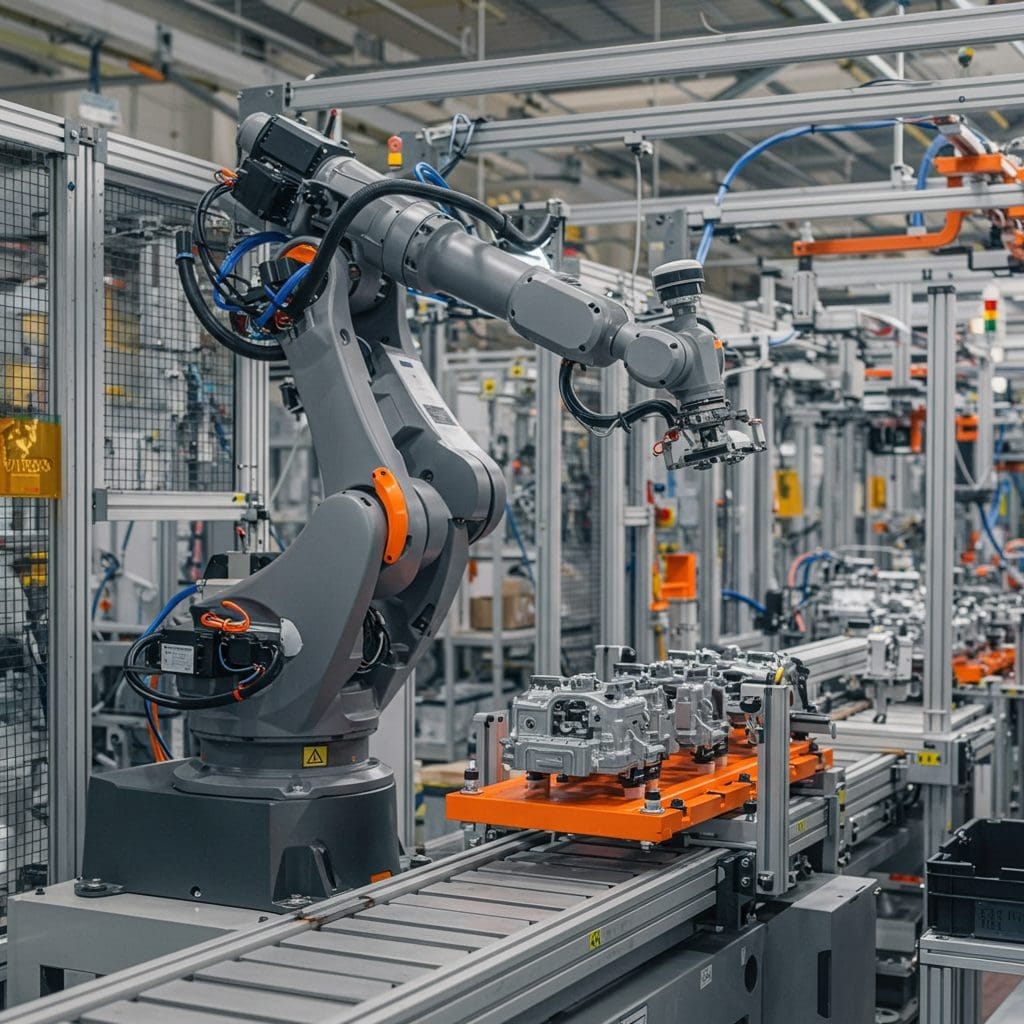Quantum Annealers From D-Wave Optimise Robotic Inspection of Industrial Components
Hybrid classical algorithms optimise robotic inspection routes derived from Computer-Aided Design models, framing the task as a three-dimensional Travelling Salesman Problem. Evaluations across five industrial cases demonstrate that these D-Wave-based solvers achieve competitive solution quality with significantly reduced computation times compared to classical methods, such as GUROBI and Google OR-Tools.
The optimisation of robotic inspection within complex industrial environments presents a considerable computational challenge, particularly when dealing with intricate three-dimensional geometries derived from Computer-Aided Design (CAD) models. Researchers are now investigating whether quantum computing offers a viable advantage in solving these path-planning problems, which are fundamentally similar to the well-known Travelling Salesman Problem. Eneko Osaba, Estibaliz Garrote, and colleagues, from TECNALIA, Basque Research and Technology Alliance and the University of the Basque Country, alongside Alessia Ciacco from the University of Calabria, detail their investigation in the article, “Quantum-Assisted Automatic Path-Planning for Robotic Quality Inspection in Industry 4.0”. Their work evaluates the performance of quantum-based solvers, utilising D-Wave systems, against established classical optimisation methods across several real-world industrial inspection scenarios.
This research demonstrates the viability of applying hybrid quantum-classical algorithms to solve complex optimisation problems arising in industrial automation, specifically the Travelling Salesman Problem (TSP) as it relates to robotic surface inspection. By framing the task as a three-dimensional variant of the TSP, incorporating realistic constraints such as incomplete graph structures and open-route requirements, the study assesses the performance of D-Wave’s hybrid solvers against established classical optimisation tools. Results obtained from five distinct industrial case studies – car doors, bumpers, toy bears, aircraft components, and H-spheres – indicate that the D-Wave hybrid solvers achieve competitive solution quality while significantly reducing computation times.
Researchers investigate the potential of near-term quantum computing to address practical industrial challenges, even before the advent of fully fault-tolerant quantum computers. This work highlights the growing potential of quantum-inspired computing to address complex optimisation challenges. It contributes to the broader effort of translating theoretical advances in quantum computing into tangible benefits for industrial automation. The Travelling Salesman Problem (TSP) is a classic combinatorial optimisation problem which seeks the shortest possible route that visits each of a given set of cities exactly once and returns to the origin city.
The research team formulates the inspection task as a constrained TSP, providing a generalisable framework applicable to a range of robotic path planning challenges. They evaluate two solvers based on D-Wave’s quantum annealing technology against established classical optimisation methods, specifically Gurobi and Google OR-Tools. The D-Wave solvers employ a hybrid approach, combining the principles of quantum computation with classical optimisation techniques to leverage the strengths of both paradigms. Quantum annealing is a metaheuristic for finding the global minimum of a given objective function over a given set of candidate solutions, by exploiting quantum fluctuations.
Five benchmark instances, representing real-world industrial parts, serve as test cases, varying in size and complexity to assess performance across diverse scenarios. Researchers model inspection tasks as a constrained TSP, enabling a comparison of solution quality and computational efficiency across different algorithms. The methodology allows for a rigorous evaluation of the D-Wave hybrid solvers against established classical optimisation tools in a realistic industrial context.
Results demonstrate that the D-Wave-based hybrid solvers achieve competitive solution quality, comparable to that of classical methods. The D-Wave hybrid solvers, namely NL-Hybrid and CQM-Hybrid, consistently deliver solutions with Average Route (AR) values ranging from 0.62 to 0.94, demonstrating a capacity to find near-optimal inspection trajectories. Crucially, these solvers accomplish this with significantly reduced computation times compared to the classical solvers Gurobi and Google OR-Tools.
While Gurobi consistently delivers slightly superior solutions, the speed advantage of the D-Wave solvers presents a compelling trade-off, particularly in scenarios where rapid response is paramount. The study quantifies solution quality using the Approximation Ratio (AR) metric and measures computational efficiency using the Run Time (RT) metric. This enables a direct comparison of the performance of different algorithms in terms of both solution accuracy and computational efficiency.
The findings suggest that D-Wave’s hybrid approach offers a compelling balance between these two factors, making it a potentially valuable tool for automating inspection processes within an Industry 4.0 framework. The ability to rapidly generate near-optimal inspection routes is particularly advantageous in dynamic manufacturing environments where flexibility and responsiveness are paramount.
The complete dataset and visualisations are publicly available, enabling further research and validation of these findings. Researchers anticipate that this open-access approach will foster collaboration and accelerate the development of quantum-inspired solutions for industrial optimisation. The availability of the data and visualisations allows other researchers to reproduce the results and explore the performance of different algorithms in various scenarios.
Future work will focus on extending this approach to other optimisation problems in manufacturing, logistics, and supply chain management. Researchers also plan to investigate the use of more advanced quantum algorithms and hardware to improve the performance of these solutions further. The team believes that quantum computing has the potential to revolutionise industrial optimisation and create significant economic benefits.
👉 More information
🗞 Quantum-Assisted Automatic Path-Planning for Robotic Quality Inspection in Industry 4.0
🧠 DOI: https://doi.org/10.48550/arXiv.2507.01462




